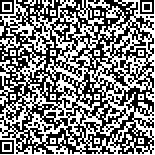| 引用本文: | 彭腾,巫晓霞,李羿,刘应,唐子惟,陶鹏.黄精名称及其基原的本草考证[J].中国现代应用药学,2023,40(1):75-81. |
| PENG Teng,WU Xiao-xia,LI Yi,LIU Ying,TANG Zi-wei,TAO Peng.Herbal Textual Research on Names and Original Plants of Polygonati Rhizoma[J].Chin J Mod Appl Pharm(中国现代应用药学),2023,40(1):75-81. |
|
| |
|
|
| 本文已被:浏览 999次 下载 465次 |

码上扫一扫! |
|
|
| 黄精名称及其基原的本草考证 |
|
彭腾1, 巫晓霞2, 李羿2, 刘应1, 唐子惟1, 陶鹏1
|
|
1.成都中医药大学药学院/西南特色中药资源国家重点实验室中药材标准化教育部重点实验室, 成都 611137;2.成都医学院药学院, 成都 610500
|
|
| 摘要: |
| 黄精是中国传统补益药,药用历史悠久,临床应用广泛。但受基原复杂和同名异物现象等因素的影响,黄精药名存在繁多混杂和梳理不系统的问题,缺乏历代黄精名称与对应品种的考证,影响了其药材的质量控制、临床疗效和资源的科学开发利用。本研究在查阅历代本草古籍、地方志和现代研究文献的基础上,应用现代植物分类学和中药材产地生态适宜性区划等技术手段,系统考证了黄精药名,正本清源,厘清其正名和异名,探讨了其名称与基原的关系。结果表明,中药黄精古今异名颇多,各品种均存在多个别名。考证发现,除滇黄精、黄精、多花黄精外,古代药用黄精品种还包括对叶黄精、湖北黄精、轮叶黄精等,均未被中国药典收录,上述资源有待进一步开发利用。现代以九华山所产多花黄精为最佳,而古代以嵩山、茅山所产黄精和湖北黄精为佳,存在较大差异的原因也有待深入深究。 |
| 关键词: 黄精 本草考证 名称 基原植物 |
| DOI:10.13748/j.cnki.issn1007-7693.2023.01.009 |
| 分类号:R282.71 |
| 基金项目:四川省科技厅重点研发项目(2019YFS0024,2021YFN0015);成都市科技局技术创新研发项目(2019-YF05-02306-SN,2021-YF05-02298-SN);实验方剂学四川省青年科技创新研究团队(2020JDTD0022) |
|
| Herbal Textual Research on Names and Original Plants of Polygonati Rhizoma |
|
PENG Teng1, WU Xiao-xia2, LI Yi2, LIU Ying1, TANG Zi-wei1, TAO Peng1
|
|
1.School of Pharmacy, Chengdu University of Traditional Chinese Medicine, State Key Laboratory of Southwestern Chinese Medicine Resources, Key Laboratory of Standardization of Chinese Herbal Medicine, Ministry of Education, Chengdu 611137, China;2.School of Pharmacy, Chengdu Medical College, Chengdu 610500, China
|
| Abstract: |
| Polygonati Rhizoma is a kind of restoratives of traditional Chinese medicine, with a long historical standing and numerous clinical applications. However, by the complexity of source species and the phenomenon of homonym, Polygonati Rhizoma has the problems of various varieties, mixed and unsystematic combing. Due to the lack of textual research on the names and corresponding varieties of Polygonati Rhizoma in past dynasties, it affects the quality control, clinical efficacy and scientific development and utilization of resources. On the basis of consulting the ancient herbal books, local chronicles and modern research literature of materia medica in previous dynasties, this study systematically verified the name of polygonatum,corrected the source, clarified its correct name and synonym, and discussed the relationship between its name and source species by using the technical means of modern plant taxonomy and ecological suitability zoning of traditional Chinese medicine. The results showed that there were numer synonym of Polygonatum in ancient and modern times, and there were many aliases in each variety. The systematic textual research found that in addition to three Polygonatum species recorded in the Chinese Pharmacopoeia, including P. kingianum, P. sibiricum and P. cyrtonema, there were P. oppositifolium, P. zanlanscianense Pamp and P. verticillatum can be used as Polygonati Rhizoma. The above resources can be further expioited. In modern times, P.cyrtonema in Jiuhua mountain is the best, while in ancient times, Polygonatum in Songshan mountain and Maoshan mountain and P. zanlanscianense Pamp are the best. The reasons for the great differences need to be further explored. |
| Key words: Polygonati Rhizoma textual research names original plants |
|
|
|
|
